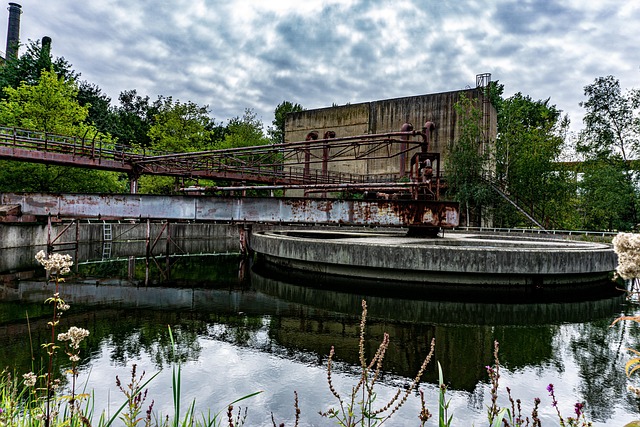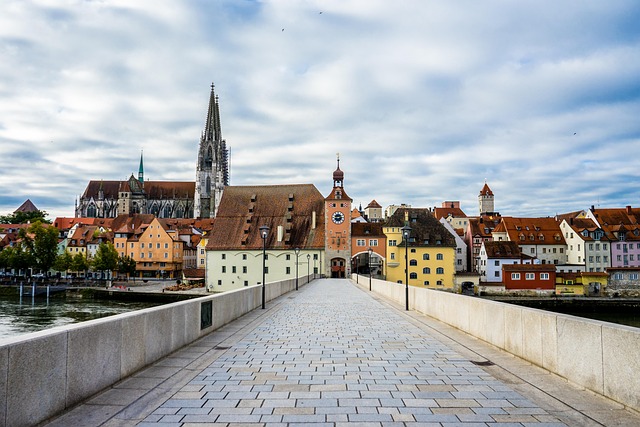Lane County, Oregon, prioritizes historical preservation through restoring buildings, protecting sites, and establishing centers, ensuring future generations connect with its rich past. Tourism, driven by economic impact and community engagement, funds and popularizes these efforts, creating a sustainable economy centered around historical heritage. Balancing growth with preservation is key for the future, offering opportunities to enhance cultural appeal and foster deeper connections through responsible tourism development.
Lane County, Oregon, boasts a rich historical landscape that draws visitors seeking immersive cultural experiences. This article explores the impact of tourism on Lane County’s historic sites, delving into the vital role of historical preservation, economic benefits, and community engagement. We analyze how responsible tourism can enhance these sites while facing challenges like funding and accessibility. Discover why preserving Lane County’s cultural heritage is not just about maintaining the past but also shaping a sustainable future for all.
- Lane County's Rich Historical Landscape
- Preserving Cultural Heritage Sites
- Tourism's Role in Historic Preservation
- Economic Impact of Historical Site Visits
- Community Engagement and Participation
- Future Challenges and Opportunities
Lane County's Rich Historical Landscape

Lane County, Oregon boasts a vibrant and diverse historical landscape that attracts visitors seeking to immerse themselves in the past. The county’s rich history is woven into its natural setting, with remnants of indigenous cultures, pioneer settlements, and agricultural heritage visible across the region. Historic sites throughout Lane County offer glimpses into the area’s transformation over centuries, from its original inhabitants’ deep connection to the land to the establishment of bustling communities and thriving industries.
The Lane County historical preservation efforts are a testament to the community’s commitment to preserving this tapestry of stories and experiences. By safeguarding historic buildings, archaeological sites, and cultural artifacts, these initiatives ensure that future generations can connect with their past and understand the indelible impact that Lane County’s history has had on shaping the present.
Preserving Cultural Heritage Sites

Lane County, Oregon, is blessed with a rich cultural heritage that draws visitors from near and far. Preserving these historic sites is paramount to ensuring future generations can appreciate and understand the past. The county has taken significant steps towards historical preservation, recognizing the vital role these sites play in shaping local identity and fostering tourism.
Through dedicated initiatives, Lane County promotes sustainable practices that safeguard its cultural heritage. These efforts include restoring historic buildings, protecting archaeological sites, and creating interpretive centers that educate the public about the region’s diverse history. By embracing these strategies, the county not only preserves its past but also enhances its appeal as a tourist destination, showcasing the beauty of its historical tapestry.
Tourism's Role in Historic Preservation

Tourism plays a pivotal role in the conservation and appreciation of Lane County’s rich historical heritage. As visitors flock to explore the region’s historic sites, they contribute significantly to funding and promoting efforts in historical preservation. The economic impact of tourism provides essential resources for maintaining and restoring ancient structures, archaeological sites, and cultural landmarks. This financial infusion allows local communities to protect these treasures for future generations.
Moreover, tourism fosters a deeper connection between locals and their history. Visitors engaging with these historic sites often spark an interest in learning more about the county’s past, encouraging residents to participate actively in preservation initiatives. This mutually beneficial relationship ensures that Lane County’s historical preservation efforts remain robust and vibrant, attracting tourists from near and far who are eager to immerse themselves in its captivating stories.
Economic Impact of Historical Site Visits

The economic impact of visitors to Lane County’s historic sites is a significant aspect of the region’s tourism industry. When visitors explore these cultural treasures, they contribute to the local economy through direct spending at nearby businesses. From accommodations and restaurants to gift shops and tour services, each historical site visit can stimulate economic growth and create job opportunities within the community. For instance, a surge in tourists attracted by the county’s rich history could lead to increased employment rates and improved business prospects for local enterprises.
Lane County’s commitment to historical preservation plays a pivotal role in attracting these visitors. Well-maintained historic sites, coupled with effective marketing strategies, ensure that both local residents and out-of-towners recognize the economic value of tourism. As a result, the positive effects ripple through various sectors, fostering a thriving and sustainable economy centered around the county’s unique cultural heritage.
Community Engagement and Participation

Lane County’s historic site tourism thrives on community engagement and participation, fostering a deep connection between locals and visitors alike. The collaborative efforts between historians, preservationists, and residents play a pivotal role in showcasing the county’s rich past. Through volunteer programs, local tours, and educational initiatives, the community actively contributes to the interpretation and promotion of their shared history. This involvement not only strengthens the sense of place but also ensures that the Lane County historical preservation narrative remains vibrant and accessible.
The impact is evident in the increased visitor satisfaction rates and the positive economic spin-offs for local businesses. Engaging with the community allows for a more authentic experience, where tourists can immerse themselves in the area’s history and culture. This mutual benefit creates a sustainable tourism model that values both economic growth and the preservation of Lane County’s invaluable historical heritage.
Future Challenges and Opportunities

The future of Lane County, Oregon’s historic site tourism presents both challenges and opportunities for local communities and conservation efforts. One key challenge lies in balancing the county’s economic growth aspirations with the preservation of its rich history. As development pressures increase, ensuring that historical sites remain protected while promoting sustainable tourism becomes essential. This delicate balance requires collaborative efforts between urban planners, historians, and community leaders to establish guidelines that preserve the authentic character of these sites.
On the other hand, there’s a significant opportunity to enhance Lane County’s cultural appeal by leveraging its historical assets effectively. By investing in restoration projects, improving visitor infrastructure, and developing immersive educational programs, historic sites can become vibrant hubs of local culture and tourism. This not only attracts visitors but also fosters a deeper connection between residents and their heritage, creating a sustainable legacy for future generations while contributing to the county’s economic diversity through responsible tourism development.






